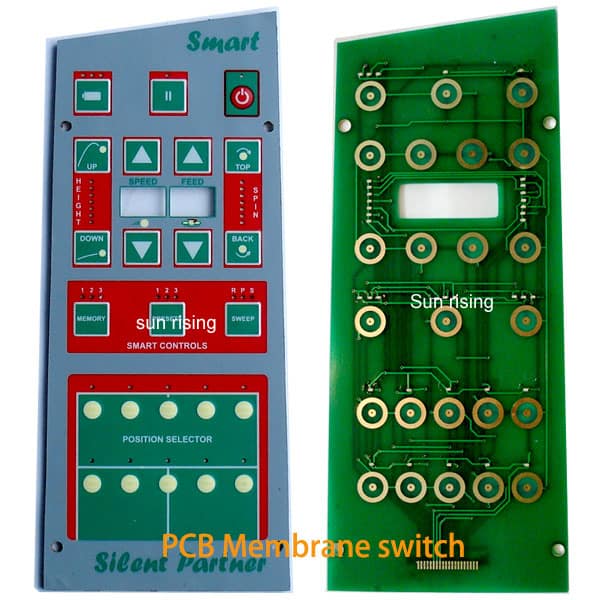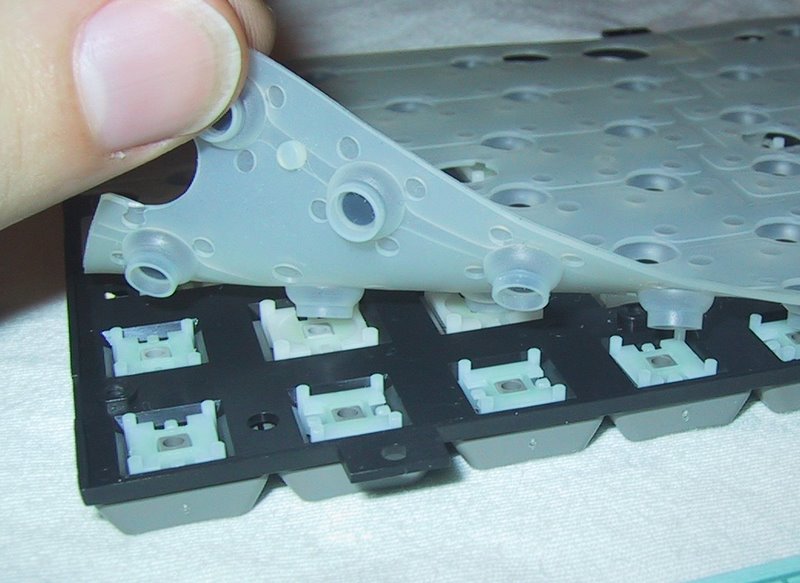Membrane Switch Over Modern Technology: The Key to Trustworthy and Affordable User Interfaces
Membrane layer switch innovation has arised as a critical part in the design of individual interfaces, supplying both dependability and cost-effectiveness throughout a diverse variety of applications. As we discover the multifaceted advantages of membrane layer buttons, their potential for advancement increases inquiries regarding future applications and progressing patterns.
Recognizing Membrane Layer Switch Over Modern Technology
Membrane button modern technology is a widely used interface service in numerous digital tools, supplying a seamless mix of performance and design. This innovation integrates multiple layers of materials, generally containing a visuals overlay, spacer layer, and a circuit layer. The graphic overlay shows the interface components, while the spacer layer divides the circuit layer from the overlay until a user activates a button.
When pressure is used to the overlay, the circuit layer finishes the electrical circuit, sending out a signal to the gadget. This mechanism permits various configurations, consisting of responsive responses and backlighting options, enhancing customer interaction. Membrane buttons are typically manufactured making use of resilient products such as polyester or polycarbonate, ensuring longevity and resistance to environmental factors like wetness and dust.
The convenience of membrane layer switches allows their application in diverse industries, including clinical gadgets, consumer electronic devices, and industrial controls. Their portable design permits for assimilation right into space-constrained settings, supplying an efficient customer interface without jeopardizing aesthetic allure. Recognizing the ins and outs of membrane button modern technology is crucial for makers and designers looking for to produce dependable and reliable human-machine interfaces.
Key Benefits of Membrane Layer Switches
While numerous user interface solutions exist, membrane layer changes deal distinct benefits that make them a favored selection in many applications. Among the main advantages is their sturdiness; membrane layer switches are made to stand up to rough environmental conditions, including wetness, dust, and temperature variations, guaranteeing lasting performance. This resilience substantially reduces the requirement for constant substitutes, consequently lowering total upkeep expenses.

Additionally, membrane layer buttons are light-weight and compact, making them suitable for applications where area is restricted. Their low-profile design adds to a sleek look without jeopardizing capability.
Cost-effectiveness is likewise a significant benefit, as the manufacturing process for membrane layer changes has a tendency to be less costly contrasted to typical mechanical buttons. This price, integrated with their integrity and convenience of installation, positions membrane layer switches over as a functional service go to this web-site for a wide variety of sectors seeking efficient and effective customer interfaces.
Applications Throughout Different Industries
How do membrane buttons adapt to the diverse requirements of numerous industries? Membrane layer button technology is significantly identified for its flexibility, making it ideal for a large range of applications across numerous industries. In the clinical field, membrane layer buttons are made use of in diagnostic equipment and client surveillance tools, where their longevity and ease of cleansing are critical for keeping hygiene requirements. The auto industry employs these switches in dashboards and control panels, supplying a streamlined aesthetic while making sure user-friendly procedure.
In consumer electronics, membrane buttons give a small solution for remotes and home appliances, improving individual experience through intuitive style. In addition, the industrial industry leverages membrane layer switches for equipment control panels, gaining from their resistance to rough environments, such as moisture and dirt.
Armed forces and aerospace applications likewise utilize membrane layer buttons for their reliability and capability to endure severe problems, making certain operational effectiveness in important circumstances. Additionally, the food and beverage market adopts these switches for automated systems, where sanitation and convenience of procedure are vital. Inevitably, membrane buttons are customized to meet the one-of-a-kind demands of each industry, showing their essential duty in contemporary innovation user interfaces
Design and Customization Choices

In the world of membrane layer button modern technology, layout and customization alternatives play a pivotal function in boosting performance and customer interaction. These buttons can be tailored to meet particular functional requirements and aesthetic preferences, making them flexible components in various applications.
One of the key personalization options is the format of the button itself, which can be designed to fit one-of-a-kind interface and ergonomic considerations. By readjusting the form, dimension, and setup of switches, producers can create instinctive designs that assist in convenience of use. Furthermore, the unification of different colors and graphic overlays enables branding and boosted presence, making certain that users can swiftly determine features.
Additionally, membrane buttons can be engineered with various responsive feedback mechanisms, such as raised buttons or distinct clicks, to boost the user experience. Various products can additionally be selected for durability and environmental resistance, attending to aspects such as moisture, temperature changes, and chemical exposure.
Ultimately, the substantial layout and personalization alternatives available in membrane layer button innovation equip organizations to create customized solutions that not just satisfy functional needs but likewise line up with their branding and operational requirements.

Future Patterns in Membrane Switches
As membrane layer button technology remains to progress, future fads are increasingly concentrated on boosting customer experience and incorporating sophisticated capabilities. One substantial pattern is the assimilation of touch-sensitive and capacitive technologies into traditional membrane switches. This growth enables more user-friendly customer interfaces, providing responsive responses while preserving a sleek design.
An additional emerging trend is the usage of environmentally pleasant products, driven by the growing demand for sustainable production practices. Producers are looking for to minimize their carbon impact by informative post utilizing recyclable substrates and low-impact inks, straightening with international sustainability objectives.
Additionally, the surge of the Net of Points (IoT) is triggering the unification of smart attributes right into membrane switches. Boosted connection alternatives will enable tools to communicate with each various other, enabling seamless combination into broader systems.
Furthermore, developments in printing innovations, such as electronic printing, are permitting greater style versatility and personalization. This enables suppliers to generate intricate styles and vivid colors Continued cost-effectively.

Final Thought
In conclusion, membrane layer switch innovation represents a crucial innovation in individual interface layout, using considerable benefits in toughness, personalization, and cost-effectiveness. As innovations proceed to arise, specifically in touch-sensitive interfaces and lasting products, the potential for membrane layer changes to improve individual experience and functionality remains appealing.